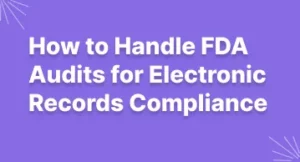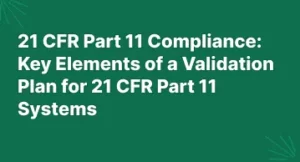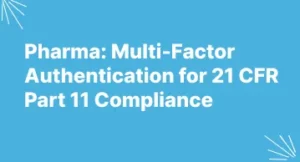Unlock the Digital Age: Uncover the Power of US Electronic Signature UETA & ESIGN
Introduction: UETA & ESIGN Act
The Electronic Signature in Global and National Commerce Act (ESIGN) and the Uniform Electronic Transactions Act (UETA) are two pieces of legislation that are vitally important in the digital age. They provide a legal framework for the acceptance and use of electronic signatures in the US, creating trust in conducting business online. In this guide, we discuss the implications and requirements of UETA & ESIGN and how they can be best used in today’s online environment.
Background: UETA & ESIGN Act
The US Electronic Signature (UETA & ESIGN) Acts are two important pieces of legislation in the digital age, passed in1999 and 2000 respectively. They were created as a response to the increasing needs of businesses in the digital age. With the emergence of the internet, e-commerce was starting to take over. Companies were utilizing new technologies to conduct transactions faster than ever before, which led to an urgent need for laws and regulations that could help legally bind the involved parties.
The UETA (the Uniform Electronic Transactions Act) and the ESIGN Act (Electronic Signatures in Global and National Commerce Act) were designed to facilitate transactions between businesses and consumers by providing legal recognition for electronic signatures used in electronic documents. These acts helped solidify the concept of an electronic signature and allowed businesses to conduct transactions without needing physical documents or signatures.
Definitions: UETA & ESIGN
The Uniform Electronic Transactions Act (UETA) and The Electronic Signatures in Global and National Commerce Act (ESIGN), commonly known as UETA & ESIGN are two pieces of legislation passed in 2000 and 2001 respectively. Both acts provide legal recognition to the use of electronic signatures and electronic records.
An electronic signature can be used in place of a physical signature, allowing parties to approve documents with the same legal effect. Electronic signatures are now widely accepted in financial transactions, contracts and regulations. These same documents can also now legally be stored, signed, and shared electronically.
Key terms related to electronic signatures include, but are not limited to, authentication, digital certificates, encryption, electronic documents, electronic signatures, public and private key technology, and signature authority.
Requirements for a Valid Electronic Signature
For an electronic signature to be valid in the US, the UETA and ESIGN Act outline certain requirements for authentication. The UETA requires that the parties must have had the opportunity to review the document, while the ESIGN Act requires that the intention of the parties to be bound by the document is established. To ensure these requirements are met, there are key steps that should be taken before a legally binding electronic signature is created.
The first step is to get consent from all parties involved. This means that each individual must be notified and offered the opportunity to review the document, and they must agree to it. Once consent is obtained from all parties involved, the document can be securely transmitted. It is essential that digital documents are sent securely to guarantee the confidentiality of the content.
The next step is authentication. This involves verifying the identity of the person signing the document. Usually, this is done through authorized channels such as passwords, two-factor authentication, biometric scanners, or digital certificates. The authentication system should also keep a record of who signed the document, when the document was signed, and the steps needed to sign the document.
Finally, there should be evidence of the electronic signature. This evidence must include a timestamp, a copy of the document, an audit trail, or documentary evidence. This is so that it can be proven that the signature belongs to the correct individual at the time of signing, and that the signature was not altered or tampered with after the fact.
By following the processes outlined above, companies and individuals can create legally binding electronic signatures that are accepted in court.
Impact from UETA & ESIGN
The main impact of the UETA and ESIGN act has been to introduce digital signatures into acts and contracts. Prior to the legislation, agreements were heavily reliant on traditional signatures, such as wet-ink signatures, stamps or seals, to be legally binding. However, the UETA and ESIGN act have allowed electronic records and signatures to also be used for legal purposes. This has had a major significance in business transactions, especially those conducted online.
The UETA and ESIGN act has meant that businesses no longer need to rely solely on physical documents. Contracts and other documents can be legally validated through electronic means, offering an easier and more efficient way of conducting transactions and mitigating risks associated with document falsification. Additionally, it has enabled more data to be securely stored and accessed in digital forms. This has allowed organizations to keep up with the changing landscape of digital technology while still abiding by relevant laws and regulations.
The changes brought by the UETA and ESIGN act have also had a positive effect on consumer protection and privacy. The legislation has allowed organizations to establish trust amongst customers, reduce the cost of document authentication and verify the authenticity of digital records. Furthermore, the introduction of digital signatures has enabled regulatory compliance, giving both customers and businesses increased confidence when conducting online transactions.
Advantages/Benefits of UETA & ESIGN
UETA & ESIGN have had a significant impact on the way signatures are used in US law. Adopting these acts has provided several advantages in terms of speed and security for businesses, consumers, and government agencies alike.
For businesses, UETA & ESIGN set out uniform standards and provide legal validity for electronic signatures, allowing contracts and documents to be signed securely and quickly from any location. This reduces the need for paperwork and face-to-face meetings, leading to cost and time savings. In addition, UETA & ESIGN allow for stronger and more secure authentication measures, such as two-factor authentication, as well as data security and privacy compliance.
For consumers, UETA & ESIGN offer convenience and flexibility since they allow signatures to be collected online. They also lower costs for consumers as they can eliminate the need for travel or hiring professional signing services such as notaries.
UETA & ESIGN also benefit government agencies by providing them with an efficient and secure means of collecting evidence, authenticating documents, and conducting transactions.
Common Use Cases
UETA & ESIGN have been widely adopted in the US and are used for many activities. The most common cases involve contracts, agreements and purchase orders. UETA & ESIGN Acts enable parties to electronically sign a document, allowing them to close the deal quickly and securely online. It also helps simplify the process of storing documents, as electronic copies can often be kept indefinitely.
In addition, both acts can be utilized for a variety of other purposes such as filing taxes, registering a business, obtaining a loan, or even signing up for a utility service. UETA & ESIGN provide legal recognition of electronic signatures and make it easier for businesses to transact online with their customers without having to rely on physical paperwork.
In summary, some activities which require the use of UETA & ESIGN are:
- Contracts
- Agreements
- Purchase orders
- Filing taxes
- Registering a business
- Obtaining a loan
- Signing up for a utility service
Exceptions and Considerations:
The UETA & ESIGN Act are not applicable to all situations. Exemptions need to be taken into account when using these acts. It is important to consider if either act is suited for the particular situation or if it would be better to use a different form of agreement such as handwritten signatures. Some key exemptions and difficulties are listed below:
- The UETA and ESIGN Acts do not apply to certain types of transactions, including those involving land, wills, trusts, pension or profit-sharing plans, and disputes between insurance companies.
- In some cases, parties may be asked to provide additional information which may not be available electronically. In these cases, parties may be asked to provide a signature manually.
- Parties must make sure that both they and the other party are able to access and print out electronically signed documents when required.
- Documents signed electronically must be stored securely, which could present a challenge for small businesses.
Strategies for implementation
When it comes to implementing the UETA and ESIGN Act successfully on a corporate level, there are certain strategic steps organizations should take. First, it is important that all company documents, contracts, and agreements are converted into digital formats that are compliant with the UETA and ESIGN Act. It is also important that employees are made aware of the legislation and how to properly utilize and create valid electronic signatures in accordance with the act.
When crafting contracts for customers, companies should make sure to give clear instructions to their customers regarding the digital signing process, as well as any additional documentation or authentication they may require for a legally binding agreement. Additionally, it is essential to securely store any signed documents, as per the governmental guidelines found in the UETA and ESIGN Act.
The best way to ensure effective implementation of the UETA and ESIGN Act is to have personnel trained and certified in its usage. This requires that the organization assigns a responsible person to ensure that all procedures, technologies, and personnel comply with the legislation.
Best Practices for UETA & ESIGN
The UETA & ESIGN Acts have revolutionized the legal landscape in the United States. While they have granted convenience and security to businesses and individuals looking to electronically sign documents, it is important to understand that there are best practices to make the most out of these laws.
To begin with, organizations should only handle signed materials if they are prepared and executed in accordance with the laws laid out in the UETA & ESIGN Acts. Furthermore, they should keep accurate records and maintain copies of any electronically signed documents and contracts in a secure environment. This will ensure that the signature remains valid and can be easily authenticated in the future.
It is also important to ensure the signature technology used is up to date and remains consistent with the latest regulations. Additionally, businesses must be aware of the applicable statutes and case law in their jurisdiction and adhere to them when handling any electronic signatures.
Furthermore, training all employees and officers on the proper use of electronic signatures is essential. If an organization is handling multiple signatures, it must be sure to authenticate them properly before accepting them as a legally valid signature.
Finally, organizations should keep in mind that there can be technical difficulties or reporting requirements from third-party providers involved in the process of obtaining electronic signatures. Therefore, it is important to be mindful of these issues and ensure they are addressed in the rules and procedures established by the organization.
The UETA & ESIGN Acts are modern day landmark pieces of legislation that have had a tremendous impact on American law and business. Additionally, the advent of digital technology has made electronic signatures more accessible and important than ever before. This guide provides an overview of UETA & ESIGN, introducing definitions, requirements for a valid electronic signature, impacts, advantages, common use cases, exceptions and considerations, implementation strategies, and best practices.
To summarise, these acts provide the legal framework to validate and bind parties to documents through electronic signature use. They have been applied to a wide range of activities, and have allowed organizations to operate more efficiently with the help of secure and legally binding digital signatures. Furthermore, they present an opportunity for businesses to streamline their processes in a compliant manner.
Ultimately, understanding the key components of UETA & ESIGN is essential in order to maximize their potential. It is also important to be aware of potential pitfalls and the various exceptions and considerations that may arise from using electronic signatures instead of a traditional pen and paper signature. By following the suggested strategies and best practices, companies can make sure that they can use this tool safely, securely, and effectively.
For those who seek additional information and resources, there are many trustworthy documents and websites that provide more detailed information on UETA & ESIGN, as well as other key topics related to electronic signatures. It is suggested that readers access these materials to gain further knowledge.
Resources
To learn more about UETA & ESIGN Act: US Electronic Signature, there are plenty of resources available online. Here are some useful links for further reading and research:
FAQs about UETA & ESIGN Act
1. What is the United States Electronic Signature Act?
The United States Electronic Signature Act, or UETA, is a form of legislation enacted to provide legality and enforceability to electronic signatures and contracts. It was developed to replace paper-based legal documents with digital ones. UETA allows for equal legal validity to an Internet contract as one formed in print.
2. What is ESIGN and why is it important?
ESIGN is shorthand for the Electronic Signatures in Global and National Commerce Act. This portion of the U.S. government’s legislation on the use of digital documents in commerce states that any signature or action committed via web, email, or other form of communication will be legally binding if certain conditions are met. By recognizing the validity of electronic signatures, the U.S. is recognizing the move to a digital economy.
3. What is needed for a valid electronic signature?
An electronic signature must be reliable and verifiable, meaning that it must identify the signer and if needed, the document being signed. Other than that, there are no additional requirements specified in the law. The ESIGN act provides for several different methods of authentication, with each having its own specific requirements. Among the most common methods are: biometrics, passwords and PIN numbers, one-time codes sent via email or SMS, digital certificates, and public/private key pairs.
4. What is the impact of UETA & ESIGN on US Law?
UETA & ESIGN have had a large effect on US Law. They provide an equal legal standing for digital documents compared to their paper equivalents, making electronic signatures more efficient, easier to use, and less costly. They also simplify contracts by reducing paperwork and cutting down on time spent filing paperwork. Finally, they make it easier for businesses to validate documents, reducing risks associated with fraudulent activities.
5. What are the advantages of UETA & ESIGN?
UETA & ESIGN provide many advantages. They save businesses time and money by creating efficiencies and reducing the costs of paperwork. They can also facilitate faster completion of business transactions and secure documents financially, reducing risks of fraud or tampering. Finally, they create an environment in which contracts can be maintained and stored electronically, eliminating the need for physical storage.
6. What are some common use cases of UETA & ESIGN?
UETA & ESIGN can be used in various business scenarios, such as purchasing or selling goods, authenticating one’s identity, approving documents online, transferring intellectual property rights, and creating any type of legal agreement. Additionally, they can be used for day-to-day interactions with customers and employees such as signing contracts, signing NDA’s, and providing authentication of orders.
7. What are strategies to implement UETA & ESIGN?
Strategies for implementation include understanding the differences between UETA & ESIGN laws, ensuring the ability to prove accuracy and authenticity of electronically signed documents, legally protecting all documents with a digital signature certificate from a qualified certification authority, and providing clear and compliant language in all documents. Additionally, businesses should ensure the safety and integrity of all electronically signed information with robust data protection protocols, encryption technologies, and secure digital signature certificates.





